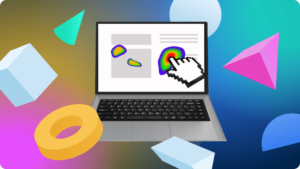Marketers understand the importance of incorporating a digital strategy—leveraging various channels to achieve their performance marketing efforts—into their omnichannel marketing mix. Historically, advertisers have either simply lacked knowledge on what is available beyond the walled gardens (see: our must-know terminology below) or had hesitation that limited them to explore further into the programmatic space. It was the unknown that seemed scary—as they often demand transparency and control.
It’s time to debunk any myths or misconceptions and get you navigating the programmatic landscape with ease!
Understanding the Digital Advertising Ecosystem 101
The digital advertising ecosystem is complex. For advertisers, it consists of a variety of media buying platforms within walled gardens (think Google, Facebook, and Amazon) and demand-side platforms (DSPs), on the open internet. Walled gardens require advertisers to buy media within a proprietary ecosystem—a controlled environment. Advertisers who buy media through a DSP are trading on the open internet, where there is a multitude of media companies and opportunities. Let’s begin with the basic mechanics of how walled gardens and programmatic environments function.
Both use a similar technology where advertising is transacted through an auction model. Two main differences between these auction models is the number of technologies involved and the type of inventory available. In a walled garden environment, the buy and sell-side are both controlled by one company in a closed auction environment. For example, when an advertiser buys media on Facebook Ads manager, the platform will facilitate and control all bidding logic on behalf of the advertiser. On the other hand, in a programmatic environment, there are two independent pieces of technology involved: the supply-side platform (SSP) and the demand-side platform (DSP). An advertiser will select a DSP of choice to transact in a real-time bidding (RTB) auction model and determine how much to bid for each available impression.
Search and social have their unique benefits as they help advertisers connect with users in places where they spend most of their time—scrolling through social feeds or Googling. Usually, users interact with these platforms for a specific purpose. For example, when a user is on social media, they are looking to connect with their network, and may not be completely receptive to an ad. When a user is searching on Google, they are looking for something specific and may not be as interested in looking at alternative recommendations. These platforms only capture a fraction of the time when users are on the internet, and there are many other online activities users engage in. Users play games on their mobile devices, binge-watch their favorite TV shows through a connected device, or simply surf the web and stumble upon numerous types of websites.
4 Reasons Why You Need to Adopt Programmatic Advertising
The programmatic advertising ecosystem has many advantages, from targeting relevant users online cost-effectively and measurably to magnifying overall brand loyalty and increasing customer acquisition. It helps advertisers streamline decision making at scale. By 2021, eMarketers estimates that almost 88% of U.S. digital display ad dollars will be transacted programmatically. If you haven’t considered adding programmatic advertising into your marketing mix, here are the reasons why now is the best time to start:
- Advancements in Ad Technology: The rapid advancements in artificial intelligence (AI) technology has fueled the popularity of programmatic advertising amongst publishers and advertisers over the last few years. Aligning how your DSP uses AI and machine learning with your marketing goals can help you achieve your objectives faster. These advancements in technology help the industry build a safer ecosystem, help advertisers predict outcomes to improve campaign performance, and provide advanced targeting and optimizing capabilities.
- Transparency and Flexibility: The automation of buying and selling online advertising promises efficiency and gives advertisers back control of how they trade and buy media. They can adjust any campaign parameters from budgets, flight dates, creative, and targeting. They also have the flexibility to optimize campaigns and pull reports in real-time, ensuring their media dollars are spent efficiently.
- Ads are Delivered in a Brand Safe Environment: All brands and advertisers want to be confident when it comes to brand safety, as it is typically a top of mind concern. It is the responsibility of the DSP, as your partner, to protect and help you navigate through the complexities of the ecosystem.
- Diverse Channel Mix: Programmatic advertising can be used anywhere throughout the marketing funnel – awareness, engagement, and conversion. The variety of formats engage consumers and make a positive impact on your marketing efforts, whether run independently or in a multi-channel strategy. Here are some examples:
Native
Native ads are placed between paragraphs of an article, they include a headline and body text. Native resonates with most marketers familiar with walled gardens because it resembles social units.

Display
Display ads are also known as banner ads and act as digital billboards. They can be static images or highly customizable rich media creatives that lead to corresponding landing pages.

Video
Promotional video content can play before, during, or after streaming content and can be viewed across all devices. It provides the opportunity for advertisers to tell a compelling story.

Connected TV (CTV)
A TV that is connected to the internet where viewers can stream video content. CTV is the ideal way to reach your target audiences on the big screen.

BONUS: Must-Know Terminology
Have informed conversations confidently with your team or agency partners, with these must-know terms.
Real-Time Bidding (RTB): is the process where media is transacted in real-time allowing an individual ad impression to be bought and sold through a programmatic environment. It is typically facilitated by ad exchanges or supply-side platforms.
Demand-Side Platform (DSP): is a technology platform that allows traders or media buyers to purchase impressions across a range of inventory—publisher’s site while having the capability to target specific users based on their browsing behavior and location.
Supply-Side Platform (SSP): is a technology platform that aggregates inventory and manages ad networks for publishers. It is used by publishers to sell advertising placements.
Ad Exchange: is essentially a digital marketplace where advertisers and publishers can buy and sell advertising space, typically through RTB.
Data Management Platform (DMP): is a technology platform that sort, organizes, stores data—think of it as a data warehouse.
Walled Gardens: also known as “closed platforms” are an enclosed control environment where advertisers can buy advertising placements.
Time to Get Programmatic
Once you understand how the ecosystem works and its many benefits, you will quickly realize why programmatic should be part of every digital strategy. With programmatic in the mix, targeting the right people, on the right device, with native, display, video, and CTV, you can build a well-rounded approach to capture your audience’s attention, and keep them interested. Not to mention, ads are run only in a brand-safe environment, with all the reporting and transparency you need to optimize and analyze efficiently.
With this kick-start on all things programmatic, you can level up your game and your bottom line—contact us to learn more.






